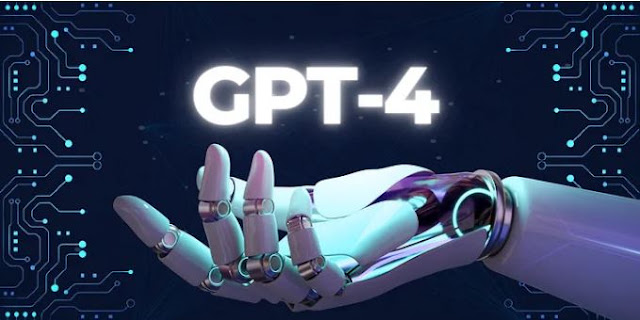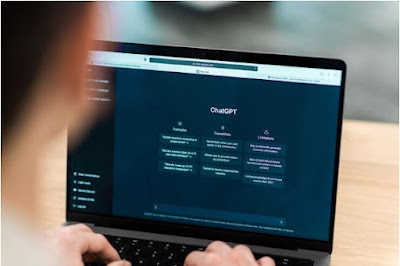Table of Contents:
1.
Introduction
2.
What is Chat GPT?
3.
History and Evolution of Chat GPT
4.
How Chat GPT Works
5.
Chat GPT applications in healthcare
6.
Chat GPT for education
7.
Using Chat GPT for customer support
8.
Chat GPT content creation tools
9.
Benefits of Chat GPT for businesses
10. Chat GPT and AI ethics
11.
Chat GPT limitations and challenges
12.
Future of Chat GPT technology
13.
Chat GPT in the entertainment industry
14.
Chat GPT vs other AI models
15.
Real-world examples of Chat GPT
16.
Chat GPT for small businesses
17.
Chat GPT impact on job market
18.
Training data for Chat GPT
19.
Conclusion
1. Introduction:
In the rapidly evolving
world of artificial intelligence, Chat GPT has emerged as a groundbreaking
technology. Developed by OpenAI, Chat GPT is a powerful language model that has
revolutionized the way we interact with machines. From customer support to
content creation, this AI-driven tool offers a myriad of applications that are
transforming various industries. In this blog, we will delve deep into what
Chat GPT is, how it works, its benefits, challenges, and future prospects.
2. What is Chat GPT?
Chat GPT, short
for "Chat Generative Pre-trained Transformer," is an advanced AI
language model developed by OpenAI. It leverages deep learning techniques to
understand and generate human-like text based on the input it receives. By
analyzing vast amounts of data, Chat GPT can carry out conversations, answer
questions, and provide detailed explanations on a wide range of topics.
3. History and Evolution of Chat GPT:
The journey
of Chat GPT began with the development of the GPT-1 model, which introduced the
concept of using transformer architecture for natural language processing. This
was followed by GPT-2, which demonstrated significant improvements in
generating coherent and contextually relevant text. The latest iteration,
GPT-4, has taken these advancements to new heights, showcasing superior
performance in understanding and generating human-like language.
4. How Chat GPT Works:
Chat GPT operates
using a neural network architecture known as the transformer. It relies on a
large dataset of text from diverse sources to learn the nuances of human
language. During the training phase, the model predicts the next word in a
sentence, gradually improving its understanding of context and grammar. This
pre-training is followed by fine-tuning, where the model is further refined
using specific datasets to enhance its performance in particular tasks.
5. Chat GPT Applications in Healthcare:
One of the
promising applications of Chat GPT is in healthcare. It can assist in providing
preliminary medical advice and information based on user input. By automating
routine inquiries, healthcare professionals can focus on more critical tasks,
improving overall efficiency and patient care.
6. Chat GPT for Education:
In the education
sector, Chat GPT is being used to provide personalized tutoring and answer
student questions. Its ability to generate detailed explanations and support
interactive learning makes it a valuable tool for both students and educators.
7. Using Chat GPT for Customer Support:
Automating
customer support with Chat GPT reduces wait times and improves customer
satisfaction. By handling repetitive queries, it allows human agents to address
more complex issues, enhancing the overall service experience.
8. Chat GPT Content Creation Tools:
Chat GPT is also
a valuable asset for content creators. It can assist in generating articles,
blog posts, social media content, and more. By providing ideas, drafting
content, and even editing, Chat GPT helps streamline the content creation
process.
9. Benefits of Chat GPT for Businesses:
Businesses across
various industries can leverage Chat GPT for multiple benefits, including:
- Efficiency: Automating
repetitive tasks, freeing up time for more complex activities.
- Scalability: Handling a
large volume of interactions simultaneously.
- Consistency: Delivering
uniform responses, ensuring consistent quality.
- Cost-Effectiveness: Reducing
the need for extensive human resources in customer service and content
creation.
- Versatility: Applicable
across numerous industries and use cases.
10. Chat GPT and AI Ethics:
While Chat GPT
offers numerous benefits, it also raises important ethical concerns. The
potential misuse of AI for spreading misinformation or generating harmful
content highlights the need for robust ethical guidelines and safeguards.
11. Chat GPT Limitations and Challenges:
Despite its
advanced capabilities, Chat GPT faces several challenges:
- Bias and
Fairness:
The model may inherit biases present in the training data, leading to
unfair or prejudiced responses.
- Contextual
Understanding:
While advanced, Chat GPT may still struggle with nuanced or highly
specific queries.
- Dependence
on Data:
The quality and relevance of the output depend heavily on the data used
for training.
12. Future of Chat GPT Technology:
The future of ChatGPT looks promising, with ongoing research aimed at addressing its current
limitations. Future developments may focus on improving contextual
understanding, reducing biases, and enhancing ethical safeguards. As AI
technology continues to evolve, Chat GPT is expected to play an increasingly
vital role in various sectors, driving innovation and efficiency.
13. Chat GPT in the Entertainment Industry:
In the
entertainment industry, Chat GPT is being used to create interactive storylines
and engaging content for games and virtual experiences. Its ability to generate
creative narratives and respond to user input in real-time opens up new
possibilities for immersive entertainment.
14. Chat GPT vs Other AI Models:
When compared to
other AI models, Chat GPT stands out for its versatility and performance in
generating human-like text. However, it is essential to consider other models'
strengths in specific applications to choose the best solution for a given
task.
15. Real-World Examples of Chat GPT:
Several
real-world applications of Chat GPT demonstrate its versatility:
- Automated
customer service for e-commerce websites.
- Personalized
learning experiences in online education platforms.
- Creative
writing assistance for authors and content creators.
16. Chat GPT for Small Businesses:
Small businesses
can particularly benefit from Chat GPT by automating customer support,
streamlining content creation, and improving overall efficiency. Its
cost-effectiveness and scalability make it an attractive solution for
businesses with limited resources.
17. Chat GPT Impact on Job Market:
The rise of Chat
GPT and similar AI technologies is expected to impact the job market
significantly. While some routine tasks may become automated, new opportunities
will emerge in AI development, maintenance, and ethical oversight. Workers will
need to adapt by acquiring new skills to thrive in an AI-driven world.
18. Training Data for Chat GPT:
The quality of
Chat GPT's performance heavily depends on its training data. OpenAI uses a vast
and diverse dataset to train the model, ensuring it can understand and generate
text on various topics. Continuous updates and improvements to the training
data are essential to maintaining the model's relevance and accuracy.
19. Conclusion:
Chat GPT
represents a significant leap forward in the field of artificial intelligence.
Its ability to understand and generate human-like text has opened up new
possibilities across multiple industries. Despite its challenges, the benefits
and potential of Chat GPT make it a valuable tool for the future. As we
continue to refine and enhance this technology, the impact of Chat GPT on our
daily lives is likely to grow, ushering in a new era of AI-driven interactions.
google-site-verification: google86c73be0806cb285.html




Comments
Post a Comment